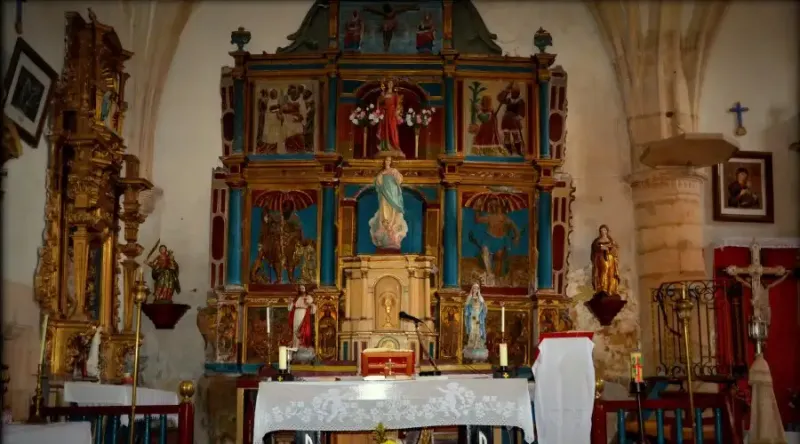
Terradillos de Sedano, Aug 5, 2022 / 04:00 am (CNA).
A crowdfunding campaign through the Hispania Nostra Foundation has raised the necessary funds to restore the 16th-century altarpiece threatened with ruin in a small village in northern Spain where only seven residents live throughout the year.
Terradillos de Sedano is a small group of homes in the San Antón river valley in Burgos Province in northern Spain. Its few inhabitants had been longing for years for the restoration of the altarpiece of the church dedicated to St. Euphemia, a fourth-century martyr who was a victim of the persecutions ordered by Emperor Diocletian.
The villagers tried to raise funds through raffles and selling lottery tickets and calendars, but with the few funds they collected, it would have taken “seven or eight years and the altarpiece could be lost,” Nieves Martínez, one of the promoters of the campaign, told ACI Prensa, CNA’s Spanish-language sister news agency.
Last summer, a neighbor from a nearby town told them about the possibility of raising funds through the Hispania Nostra Foundation created for the defense and promotion of Spain’s cultural and natural patrimony.
The campaign to raise the nearly $30,000 needed to restore the splendor of the main altarpiece in Plateresque Renaissance style, made of polychrome gilded wood, lasted almost two months, from May to July, and was successful, with more than 400 donors contributing.
Martínez explained that the restoration expert in charge of doing the work has already taken the first samples necessary to assess the damage. “It’s expected that in September or October the altarpiece will be dismantled and taken to the workshop,” she said, so that once again at the beginning of next year, it will beautifully adorn the head of the apse of the church.
Risk due to the structure’s deterioration
The altarpiece is set on the raised sanctuary floor. Its upper part depicts a crucifixion scene with the images of Jesus, the Virgin Mary, and St. John, all crowned with the image of the eternal Father on a pediment.
In the rest of the altarpiece, which contains the tabernacle, images of the Fathers of the Church, the four Evangelists, St. Roch, St. Sebastian, and two reliefs on the life and martyrdom of St. Euphemia are represented.
High humidity and temperature changes have seriously affected the structure of the altarpiece. According to the technicians, many of the pieces are “completely dislocated from their original position” both due to the passage of time — more than 500 years — and due to woodworm activity.
In addition, there are many breaks and missing pieces, and there is danger that the polychrome may come off.
All this will be repaired, but the residents are not satisfied. “We are very pumped up,” Martínez said, announcing that they will continue to mobilize for the conservation of the artistic religious heritage of Terradillos de Sedano.
Although the church is not large, it has six other altarpieces from a nearby town that was depopulated that some villagers want to repair as well.
The St. Euphemia parishioners who come every Sunday at the sound of the church bells to celebrate Mass will have to wait before that can be accomplished, but they know that for now, the altarpiece of the main altar has been rescued.
This story was first published by ACI Prensa, CNA’s Spanish-language news partner. It has been translated and adapted by CNA.
If you value the news and views Catholic World Report provides, please consider donating to support our efforts. Your contribution will help us continue to make CWR available to all readers worldwide for free, without a subscription. Thank you for your generosity!
Click here for more information on donating to CWR. Click here to sign up for our newsletter.





Leave a Reply